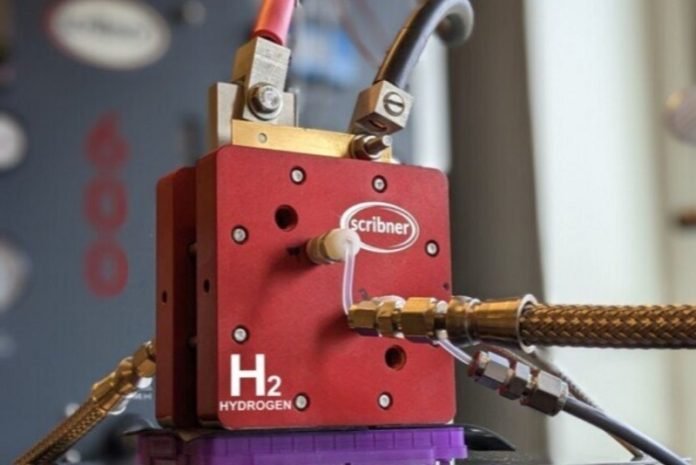
Researchers at Umeå University have made an exciting breakthrough in hydrogen production, which could make this clean and CO2-free fuel more affordable.
By developing a new method for water electrolysis, the process of extracting hydrogen from water using electricity, the team has overcome a major obstacle in our journey towards a sustainable society.
This discovery has the potential to revolutionize the production of hydrogen, an excellent energy source that can replace fossil fuels.
A research team led by Eduardo Gracia from Umeå University has achieved a significant milestone in the quest for affordable hydrogen production.
Hydrogen gas is a promising fuel source that can help us transition away from fossil fuels, and water electrolysis is the key process for generating hydrogen from water.
However, this process has faced a major challenge: the need for expensive and scarce noble metals like platinum, ruthenium, and iridium as electrocatalysts.
The team’s study, recently published in Communications Engineering, addresses this issue and paves the way for more affordable hydrogen production.
The breakthrough lies in a new method to stabilize noble metals and prevent their degradation over time.
The researchers developed a unique scaffold, a supportive structure, to trap the noble metals and keep them stable even under harsh conditions.
This scaffold is made of a mixture of tin, antimony, molybdenum, and tungsten oxides (Sn-Sb-Mo-W), which has proven to be strong enough to protect not only the noble metals but also other components of the system from breakdown during the hydrogen production process.
The stability of noble metals is crucial because their degradation, known as “metal dissolution,” reduces the efficiency of hydrogen production.
By ensuring the longevity of noble metals, the team’s findings make proton exchange membrane (PEM) water electrolysis technology more affordable and effective for large-scale, renewable hydrogen production.
This breakthrough represents a significant step towards our transition to a more sustainable society.
By making hydrogen production more affordable, we can accelerate the adoption of hydrogen as a clean fuel source, reducing our dependence on fossil fuels and contributing to a greener future.
The ability to produce hydrogen at a lower cost has far-reaching implications. It opens up possibilities for various applications, including fuel cell-powered vehicles, energy storage, and renewable power generation.
The widespread use of hydrogen as an energy source could significantly reduce greenhouse gas emissions and help combat climate change.
In conclusion, the research team at Umeå University has made a groundbreaking discovery in hydrogen production.
Their new method, using a stable scaffold to protect noble metals, brings us one step closer to affordable and sustainable hydrogen.
This advancement holds great promise for a future powered by clean energy, offering hope for a greener and more environmentally friendly world.



